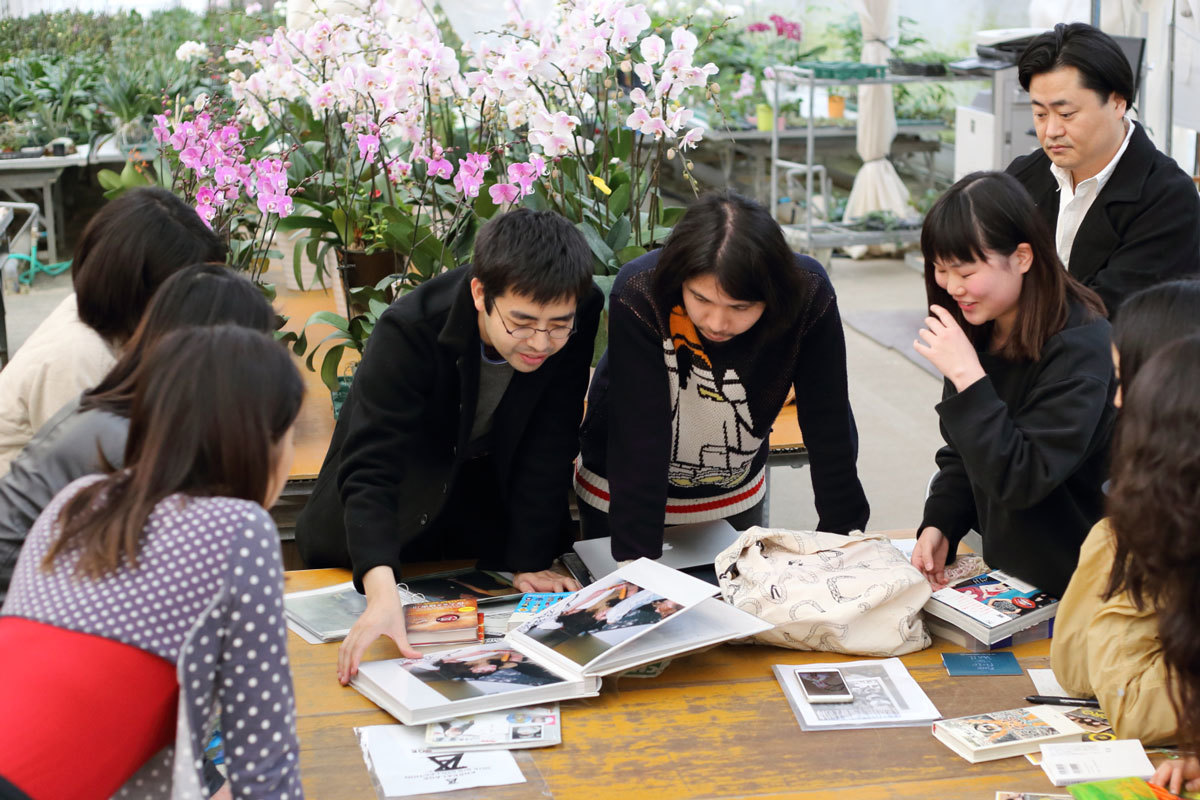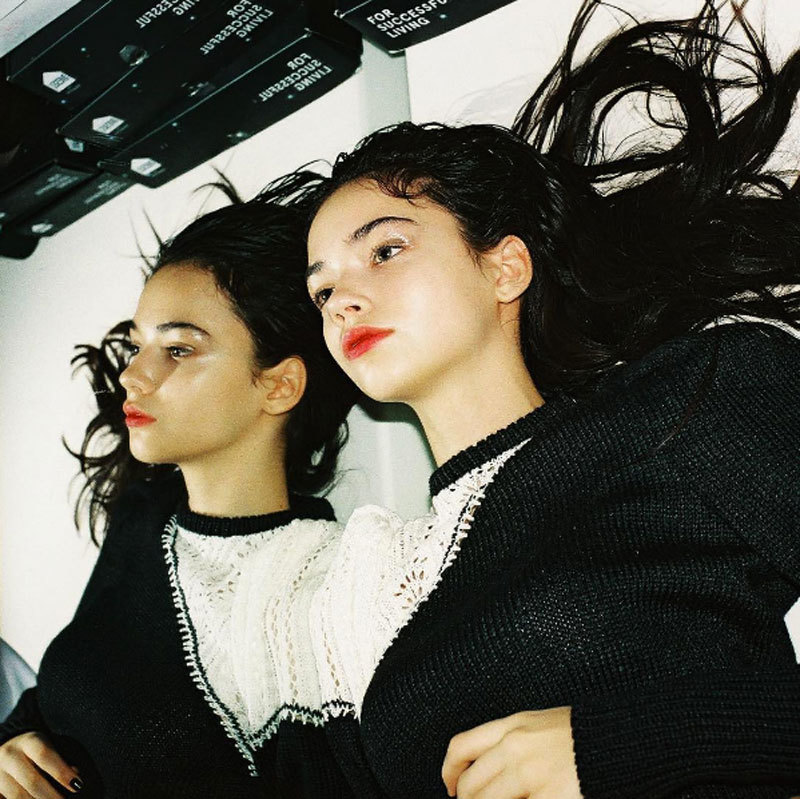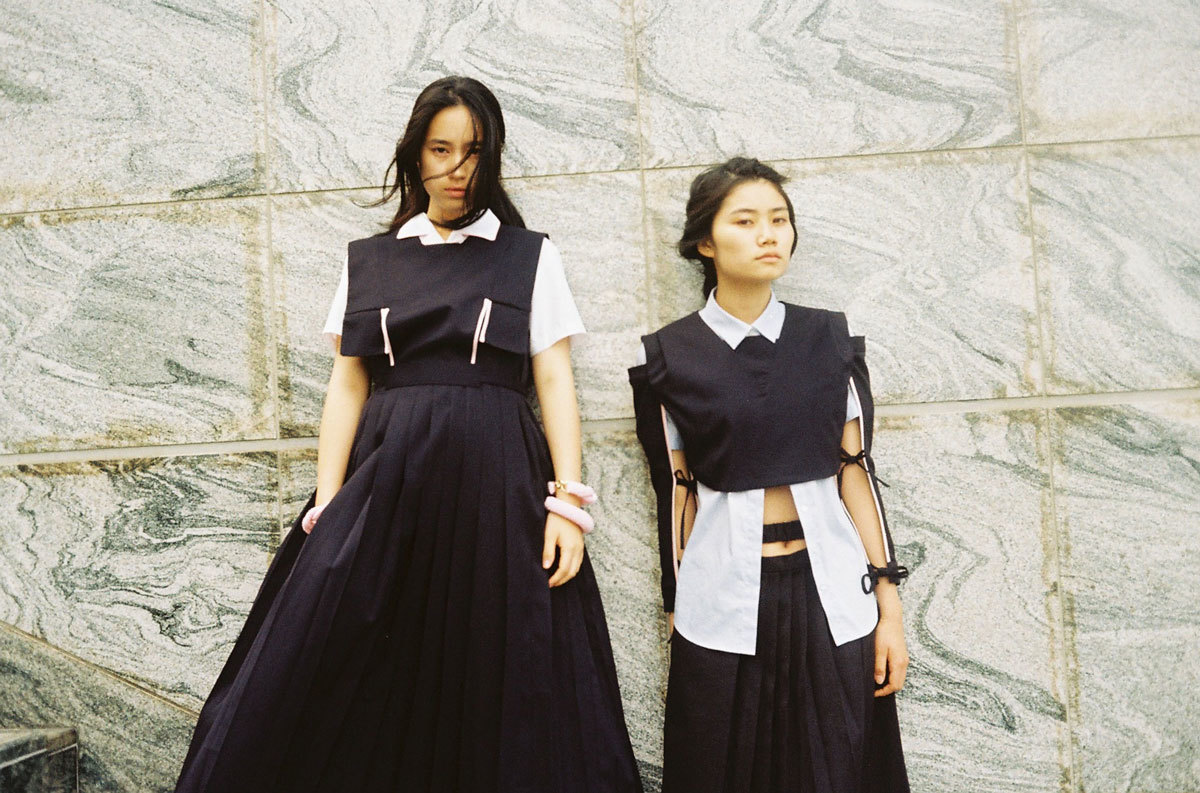It’s a Saturday night in Ginza, Tokyo’s glittering high-end shopping district, and a group of about 30 Japanese fashion students have congregated in a small studio tucked away at the back of a drab tower block. They have all the appurtenances of fashion students everywhere: iced coffees, directional getups, bags under their eyes. But unlike most fashion students on a Saturday evening, they’re not preparing for a night out. Instead, they’re at a weekly seminar, taking notes about Gaudi, Studio Ghibli scenery, and the London designer Charles Jeffrey. They’ll be here until around midnight.
This is Coconogacco, a school founded in 2008 by the WrittenAfterwards designer Yoshikazu Yamagata. Despite its relatively recent inception, the school is gaining traction for its unorthodox approach to fashion education — the school’s name translates to ‘school of individuality.’ Coconogacco trains its students not in fashion design, but in creative thinking, inspiration sourcing, and uninhibited experimentation. While this may seem pretty standard for a Western fashion course, such a liberal approach is unusual in Japan. Here, knowledge rules over creativity.
“In most Japanese fashion schools, we collect a lot of information first, through magazines and catalogues. We research the history of clothes, and how to make them, and so on. We’ll take that research and that information and revisit it and revise it again and again,” explains Yamagata. “The Japanese way of teaching is historically very finely-tuned and technical, whereas the European way is much more open, so students can work with more general concepts like creativity and originality. In Japan, we have to do the same as everybody else, the same technique and the same philosophy. But European [arts education] gives more freedom.”
Yamagata founded Coconogacco after spending five years in Europe, where he studied at Central Saint Martins, before interning for John Galliano in Paris. After he returned home in 2005, the designer found himself in high-demand. “There weren’t many people in Japan that knew about how fashion was taught outside of Japan, and when I got back, lots of people were asking me about Saint Martins, and what I did there. I got invited to lots of fashion schools in Japan to explain what was going on in London.”
From there, he spotted an opportunity to give Japanese fashion education a much-needed upgrade, and just a year after founding his own label WrittenAfterwards, Coconogacco was born. “Because the way fashion is taught in London and Japan is done so differently, I wanted to make a space where we could merge these ideals. It’s not necessarily a mix of a Bunka or a Saint Martins teaching style, but more a marriage of European and Japanese ways of teaching.”

The courses Coconogacco offers are intended only to be supplementary, to provide students with creative knowledge that they can use to enhance other studies or jobs. Thus, the lessons take place on evenings and weekends to work around the students’ schedules. The designer Mikio Sakabe also teaches there, running a year-long course that prepares students who are starting their own label and equips them with practical business skills. It’s not just fashion either; as well as aspiring designers, the school has architects, fine artists, and even philosophy students. “We don’t have any boundaries on who we take, as long as they have creative potential,” says Yamagata.
Still, it’s in fashion design that the school’s approach is yielding the most tangible results. An impressive amount of Coconogacco’s graduates have won or been nominated for some of the industry’s most prestigious accolades. In 2010, Yamagata suggested that one of his students, Takashi Nishiyama, enter the International Talent Support (ITS) contest. “That year, Takashi became the first person from a Japanese school to win the ITS award. Even I was surprised,” Yamagata said. Since then, he has pushed more of his students to enter international competitions, and has a range of glittering alumni to show for it. Noriko Nakazato won the ITS Jewelry award, and designers Soshi Otsuki and Yuko Koike have both been nominated for the LVMH prize.

Akiko Aoki, another Coconogacco success story, recently put on her first solo runway show at Tokyo Fashion Week. Aoki is a promising talent, whose feminine designs reflect an open sexuality that is unusual in a Japanese designer. While she studied fashion design at Joshi University (and spent a year at Central Saint Martins), Aoki attributes much of her creative expertise to what she learnt at Coconogacco. “A big range of students come together in the same class at Coco and we exchange ideas about everything, not just fashion. In other Japanese arts universities, they just want to study fashion or art, and they only focus on that. But at Coconogacco, we always discuss many things together and find new ideas together.”
Because of its approach, and resultant successes, the school has quickly found itself on the radar of some of fashion’s most influential talent spotters. “I have been waiting and wondering why young Japanese designers have not been appearing, at least to Western eyes, for such a long time,” Sarah Mower MBE, BFC Ambassador for Emerging Talent, has pondered. “After Undercover and Sacai, it’s hard to name any Japanese label we know about. Now, I am sure that Coconogacco is going to generate a whole new determination to act together, exchange ideas, and speak to the world.”
Still, when Mower came to visit, according to Yamagata, “not one of the twenty students who gave her a presentation could speak any English.” While the Japanese/English language barrier is unlikely to disappear overnight, Coconogacco is committed to finding ways to improve students’ communication skills, and has forged strong relationships with some of the world’s top fashion institutions, including Polimoda in Italy and Parsons in New York.
The school has also partnered with Central Saint Martins in London. Maria Nishio, a senior lecturer there and an old classmate of Yamagata’s, collaborates with Coconogacco. They run short courses twice a year in Tokyo, one of which is taking place this weekend. Nishio spent most of her childhood in Japan, so is well versed in the cultural differences that can get in the way of designers looking for international success. “Growing up in Japan, it’s not always considered a good thing to express yourself. It can come across as impolite. But in art and fashion, it’s inevitable. You don’t have to be pushy, but you need to know who you are,” she says.
Her goal is to teach the students about portfolio prep (something they don’t do in Japan), and how to effectively communicate their work by working around the language barrier. This means Coconogacco students get a masterclass in how to sell themselves as global designers, even if their English isn’t great. “Words can help, but it’s more the research and images. You communicate visually, so perfect sentences aren’t necessary. You just need to learn how to bring that message across, and how to tell a story.”
Credits
Text Ashley Clarke
